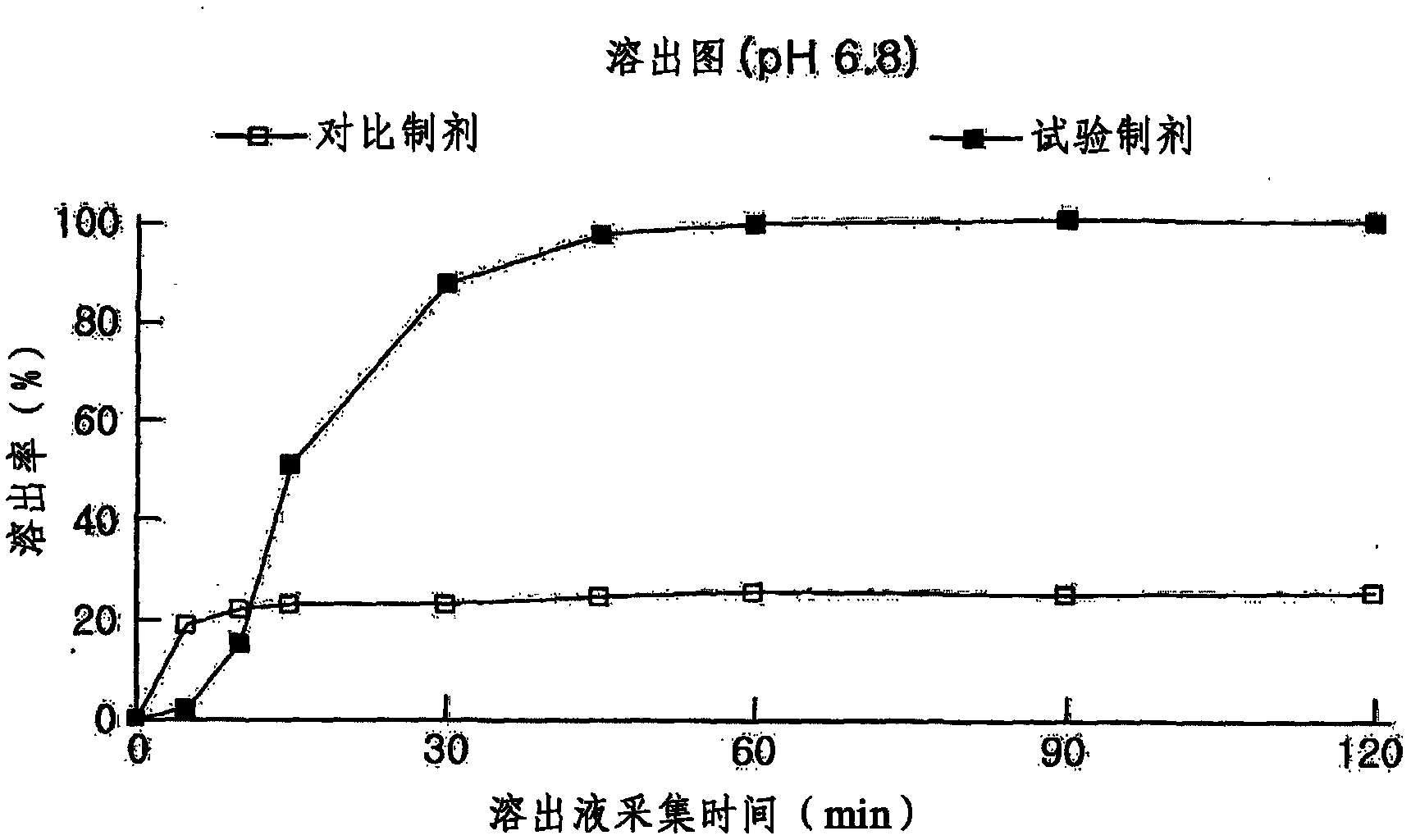Improved dosage form containing extract from bark of liriodendron tulipifera as active ingredient
The technology of Liriodendron tulipifera and its extract is applied in the field of pharmaceutical preparations for the treatment of gastrointestinal diseases, can solve the problems of insolubility, low bioavailability, low solubility and dissolution rate, and achieves easy dissolution, prevention or treatment of gastrointestinal diseases. tract disease, the effect of increased bioavailability
- Summary
- Abstract
- Description
- Claims
- Application Information
AI Technical Summary
Problems solved by technology
Method used
Image
Examples
preparation example 1
[0050] Preparation Example 1: Preparation of Isolated and Purified Liriodendron bark extract
[0051] 200 g of chopped and dried bark of Liriodendron tulipifera was extracted with 800 ml of ethyl acetate for 24 hours at 50°C. The obtained extract solution was concentrated and dried under reduced pressure. 6.83 g of extract was finally obtained. The amount of epituliprolactone was 3.96 wt%, and the amount of lignolide was 0.18 wt%.
[0052] Dissolve 1 g of the extract obtained in the above steps with 50 ml of 70% ethanol. After adding 50 ml of hexane, the mixture was stirred and partitioned. The resulting 70% ethanol fraction was separated and dried. Finally, 0.483 g of purified extract was obtained. The amount of epituliprolactone was 9.72 wt%, and the amount of lignolide was 0.28 wt%.
preparation example 2
[0053] Preparation Example 2: Preparation of Isolated and Purified Liriodendron bark extract
[0054] 200 g of chopped and dried bark of Liriodendron tulipifera was extracted with 800 ml of ethyl acetate for 48 hours at 50°C. The obtained extract solution was concentrated and dried under reduced pressure. 7.67 g of extract was finally obtained. The amount of epituliprolactone was 3.94 wt%, and the amount of lignolide was 0.14 wt%.
[0055] Dissolve 1 g of the extract obtained in the above steps with 50 ml of 70% ethanol. After adding 50 ml of hexane, the mixture was stirred and partitioned. The resulting 70% ethanol fraction was separated and dried. Finally, 0.571 g of purified extract was obtained. The amount of epituliprolactone was 10.94 wt%, and the amount of lignolide was 0.30 wt%.
preparation example 3
[0056] Preparation Example 3: Preparation of Isolated and Purified Liriodendron bark extract
[0057] 200 g of chopped and dried bark of Liriodendron tulipifera was extracted with 800 ml of dichloromethane for 72 hours at 36°C. The obtained extract solution was concentrated and dried under reduced pressure. 4.95 g of extract was finally obtained. The amount of epituliprolactone was 5.10 wt%, and the amount of lignolide was 0.35 wt%.
[0058] Dissolve 1 g of the extract obtained in the above steps with 50 ml of 70% ethanol. After adding 50 ml of hexane, the mixture was stirred and partitioned. After the ethanol fraction was obtained, 40 ml of water and 90 ml of dichloromethane were added and stirred. The resulting dichloromethane fraction was separated and dried. Finally, 0.071 g of purified extract was obtained. The amount of epituliprolactone was 23.43 wt%, and the amount of lignolide was 0.79 wt%.
PUM
 Login to View More
Login to View More Abstract
Description
Claims
Application Information
 Login to View More
Login to View More - R&D
- Intellectual Property
- Life Sciences
- Materials
- Tech Scout
- Unparalleled Data Quality
- Higher Quality Content
- 60% Fewer Hallucinations
Browse by: Latest US Patents, China's latest patents, Technical Efficacy Thesaurus, Application Domain, Technology Topic, Popular Technical Reports.
© 2025 PatSnap. All rights reserved.Legal|Privacy policy|Modern Slavery Act Transparency Statement|Sitemap|About US| Contact US: help@patsnap.com



